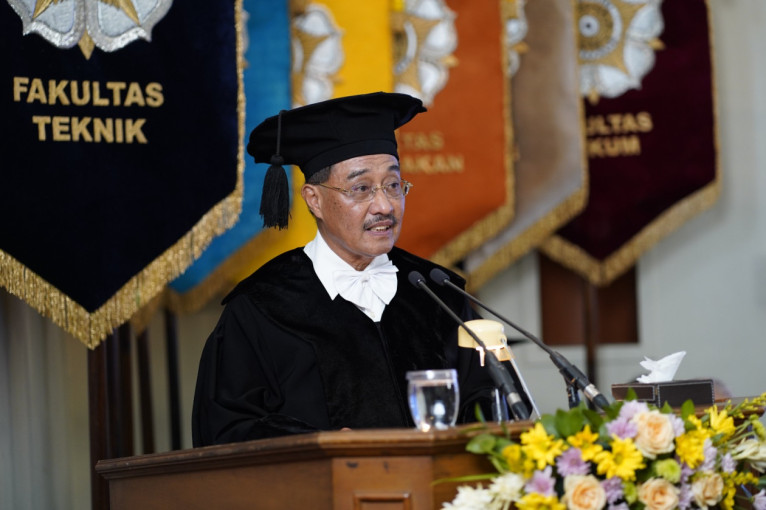
A momentous occasion unfolded at Universitas Gadjah Mada (UGM) as Dr. Bambang Supriyadi took the prestigious mantle of a civil engineering professor specializing in structural engineering at the Faculty of Engineering.
The auspicious inauguration ceremony transpired on Tuesday (Jan. 9) at the UGM Senate Hall, marked by an address titled “Bridge Development and the Aerodynamic Wind Influence on the Stability of Long-Span Cable Bridges.”
The perennial question of the most fitting bridge type in bridge construction invariably surfaces. Professor Supriyadi illuminated this inquiry, emphasizing the pivotal role of creativity and planning skills in addressing the multitude of design possibilities.
The planning phase, he articulated, mandates consideration of crucial factors such as strength, stiffness, stability, serviceability, durability, economic viability, and aesthetic appeal.
The selection of the bridge type, Professor Supriyadi elucidated, is intricately linked to the requisite span length. Short to medium-span bridges often witness the deployment of reinforced concrete girders, steel girders, steel boxes, and prestressed concrete.
However, for the grandeur of long-span bridges, cable-type structures like suspension and cable-stayed bridges come to the forefront.
“In this context, the bridge controls traffic volume and weight manageable by the transportation system. Thus, the bridge is pivotal in balancing the transportation ecosystem,” the professor expounded.
Delving into the history of bridges, Professor Supriyadi charted the trajectory of human civilization interwoven with the evolution of bridge engineering.
The ancient categorization of bridge types—beams, cantilevers, arches, suspension cables, and trusses—evolved over centuries.
Structural forms, materials, planning methods, fabrication, and construction techniques bore witness to the unfolding saga of bridge engineering’s metamorphosis.
Professor Supriyadi then turned his attention to the intricacies of suspension bridges, where cables assume paramount significance in supporting the bridge floor’s load.
The aeroelastic behavior of long-span bridge structures with cable supports emerged as a critical facet warranting comprehensive study in design and analysis.
These structures grapple with challenges stemming from wind forces that, if not addressed, can jeopardize safety and operational efficiency, culminating in the instability of the entire bridge structure.
Dynamic wind load stands out as a chief concern for long-span bridges. The Tacoma Narrows Bridge’s collapse is a poignant illustration of structural failure induced by aerodynamic instability, exacerbated by inadequate deck thickness.
The undulating motion caused by the width-span ratio’s inability to withstand aerodynamic loads led to the bridge’s collapse despite being designed to endure wind speeds of up to 193 km/h (53.6 m/s). The catastrophic collapse transpired due to a wind gust at 67.6 km/h (18.78 m/s).
Author: Ika
Photographer: Firsto

